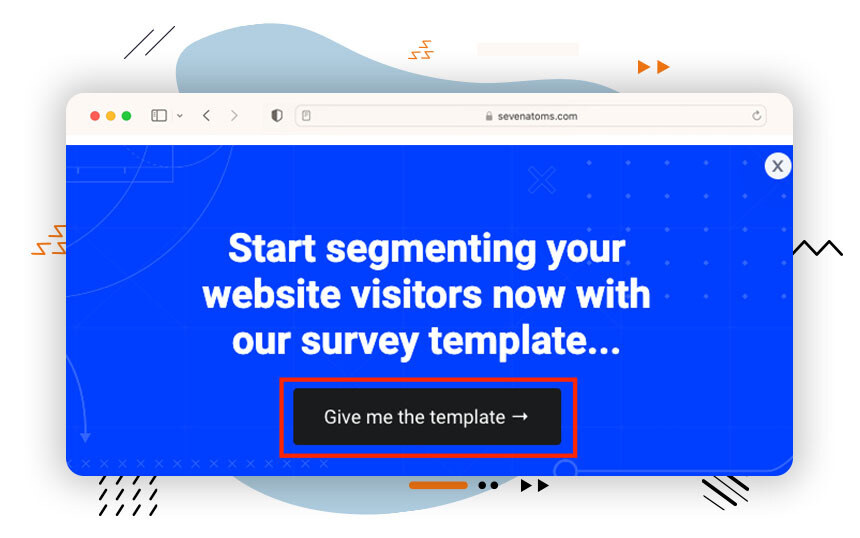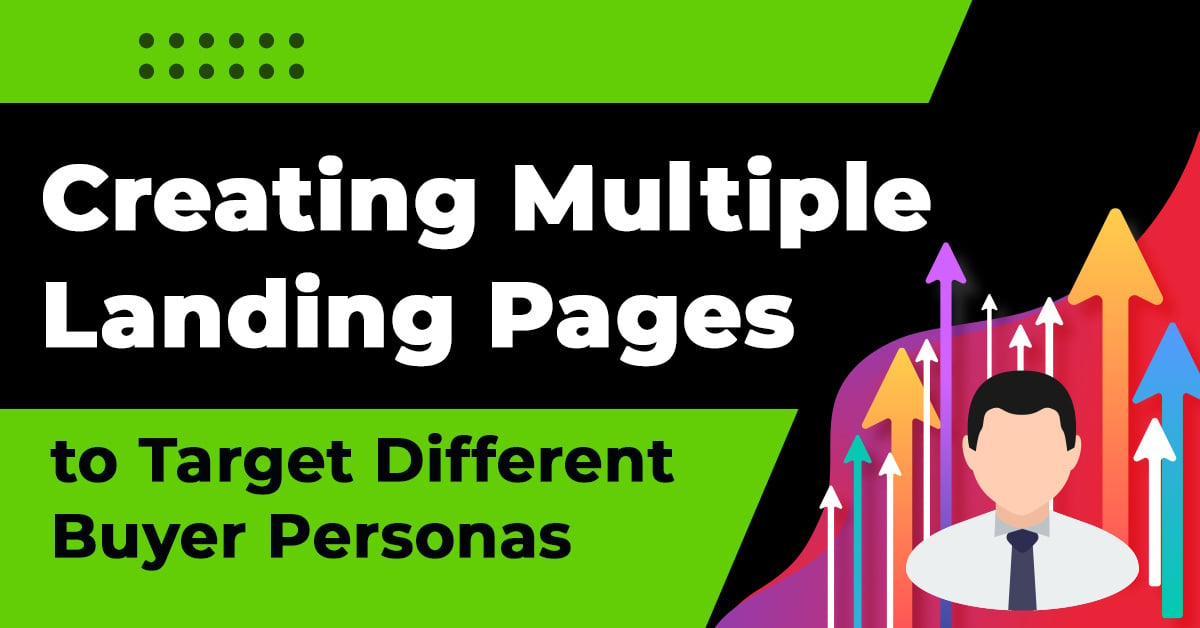Are you targeting different buyer personas with your marketing campaigns? If so, then you’re on the right track. However, you can increase conversion rates even further by using multiple landing pages tailored to a specific buyer.
Consider this: Your buyers have different needs, wants, and problems. So why not create a unique landing page for each buyer, with messaging and content that’s relevant to them?
In this blog post, we’ll show you how to create multiple landing pages to target different buyer personas and share some tips and tricks for optimizing your landing pages for conversions.
Benefits of creating multiple landing pages to target different buyer personas
Buyer personas are fictional representations of potential customers based on their needs, challenges, and goals. Multiple landing pages tailored to different buyer personas can deliver a more personalized and relevant experience.
For example, Hims & Hers, a leader in telehealth and wellness, uses multi-landing pages to drive higher conversions among diverse audience segments.
Their approach tailors landing pages to cater to different customer groups’ unique needs and preferences, using targeted messaging, visuals, and offers to create a highly relevant and engaging experience.
One of the key strengths of Hims’ multi-landing page strategy is its ability to speak directly to various demographics and conditions.
Whether addressing hair loss, skincare, personal health, or other wellness concerns, Hims ensures that each landing page resonates with the intended audience.
Here’s a simple example of the landing page for men’s hair loss solutions. It’s simple yet effective. The user knows exactly what the landing page is about with a quick glance (reducing bounce rates).
The various Hims pages all focus on their own product offering, like skincare or personal health. Each is catered to the specific product in question.

By applying targeted messaging, visuals, and offers, they create a highly relevant and engaging visitor experience.
You can improve your ad relevance by creating multiple landing pages tailored to keywords and search intents. This can lead to a higher quality score, lower cost per click (CPC), and improved ad placement.
Most importantly, when visitors arrive on a landing page tailored to their specific needs and interests, they’re more likely to trust the brand and believe the company can provide them with a valuable solution. This can lead to higher conversion rates and more sales.

8 ways to use multiple landing pages to target different buyer personas
Here are eight simple steps to creating landing pages that convert.
#1. Identify your buyer personas
Before you start creating multiple landing pages, it’s essential to have a clear understanding of your different buyer personas. These are semi-fictional representations of your ideal customers, including their demographics, roles, job titles, responsibilities, problems, and goals.
Why are buyer personas so important? Because they help you create landing pages tailored to your target audience’s needs and interests.
When you understand your buyers, you can create messages and offers that are more likely to engage them and increase your chances of conversion.
#2. Segment your audience
Once you’ve identified your buyer personas, the next step is to segment your email list or website traffic into distinct groups based on those personas.
This can be done using data you already have, such as:
- Customer purchase history
- Demographic information
- Website behavior
You can also use lead capture software to create forms and collect additional visitor data, such as their job titles, industry, and problems. Then, create separate landing pages for each segment based on the segmentation.

You should tailor each landing page to the specific needs and interests of the buyer persona you are targeting. This includes using relevant keywords, messaging, and offers.
#3. Create unique value propositions
One of the most important things to remember when creating multiple landing pages to target different buyer personas is ensuring each landing page has a unique value proposition.
A value proposition is a clear and concise statement that articulates the benefits of your product or service and how it can solve your target customer’s problems.
To create a unique value proposition for each landing page, you must first understand your target buyer persona’s specific needs and pain points.
Once you understand your buyer persona, you can start to craft a value proposition highlighting the benefits of your product or service that are most relevant to them.
For example, if you create a landing page for marketing managers, your value proposition might focus on how your product or service can help them increase leads and sales.
Chris Masanto, the CEO and co-founder of PetLab, says, “In ecommerce business, tailoring your approach to distinct buyer personas is not just beneficial, it’s essential. At PetLab, we’ve harnessed this by developing specific product category landing pages, each crafted to resonate with a unique audience segment. For example, our joint health supplements page is designed with older pet owners in mind, featuring easy-to-navigate layouts and content that speaks directly to their concerns. Conversely, our active lifestyle supplements page targets a younger demographic with vibrant visuals and energetic messaging. Creating unique value propositions for each product category has streamlined our customers’ shopping experience and significantly boosted our conversion rates. It clearly demonstrates how understanding and addressing the nuanced needs of different buyer personas can transform your ecommerce strategy.”
#4. Tailor content and messaging
Customize each landing page’s content, messaging, and language to speak directly to the respective persona’s pain points, goals, and challenges. Consider localization if you need to overcome language barriers.
This means crafting emotionally resonant and relevant content they can relate to, highlighting the features and benefits of your product or service.
For example, if you are a B2B company offering multiple solutions and services, including landing page design services you could create separate landing pages for marketing agencies, startups, and freelancers.

Landing pages for startups may focus on affordability and ease of use, while landing pages for large enterprises may focus on scalability and security features.
#5. Pay attention to design and imagery
The images and graphics on your landing page should be high-quality and relevant to your target audience. Avoid using stock photos or images unrelated to your product or service.
Use images and graphics to tell the story of your buyer’s journey and how your product or service can help them achieve their goals.
For example, offer a sales enablement and CRM platform. You might use an image of a salesperson closing a deal or a customer support team member solving a customer’s problem. Better yet, add a video like TigerLRM does.

Most importantly, your landing page design should be consistent with your brand identity. This means using the same fonts, colors, and design elements across your landing pages.

#6. Tailor CTAs to your buyer personas
When creating multiple landing pages to target different buyer personas, you should tailor your call-to-action buttons (CTAs) for each persona.
In other words, create CTAs relevant to your buyers’ needs and pain points, encouraging them to take the desired action.
Take inspiration from LOVO, a text-to-speech software. The CTA is in the direct center of the page and entices advertisers to try the AI-powered software for free.

Here are some more tips for tailoring your CTAs to your buyer personas:
- Use urgency and scarcity to create the fear of missing out (FOMO).
- Understand the needs and pain points of each persona.
- Make your CTAs clear and concise.
- Test and optimize your CTAs.
#7. Use dynamic content
Dynamic content is a simple way to personalize your landing page and create a more engaging experience for your target audience. In other words, use technology to display different content elements to visitors based on their persona or behavior.
If you have a marketing automation system, you can use it to personalize landing pages in real-time.
For example, you can show different content to first-time visitors to your site compared to visitors who have already downloaded a white paper or signed up for a free trial.
Here’s a great example of a pop-up from ConvertFlow that entices visitors after a few minutes on the site and encourages them to try a free survey template.

#8. Conduct A/B testing
Once you’ve created multiple landing pages to target different buyer personas, testing and optimizing them over time is important.
One of the best ways to test your landing pages is to use A/B testing. A/B testing is the process of comparing two versions of a web page to see which one performs better.

In this case, you’d create two versions of each landing page, with one small difference between the two. This could be anything from a different headline to a different call to action.
By testing different elements on your landing pages, you can determine which elements work best for each buyer persona and make data-driven improvements. This will help you create landing pages that are more effective in converting visitors into leads.
Wrapping up
Creating multiple landing pages for different buyer personas is a great way to grab their attention and generate more sales. However, you must first understand your target audience and their needs.
Once you understand your target audience well, you can create different types of landing pages with personalized messaging and content that’ll capture their interest. Ensuring your landing pages are visually appealing and easy to use is also important.
Finally, you should monitor your landing page performance and make the necessary adjustments.
The marketing teams at Salesforce, Slack, and HubSpot have all successfully used custom landing pages in their marketing strategy. Following their example, you can create more effective landing pages to attract your target audience and drive business results.
Are you ready to create the perfect landing page for your audience? It’ll improve the user experience tenfold.










